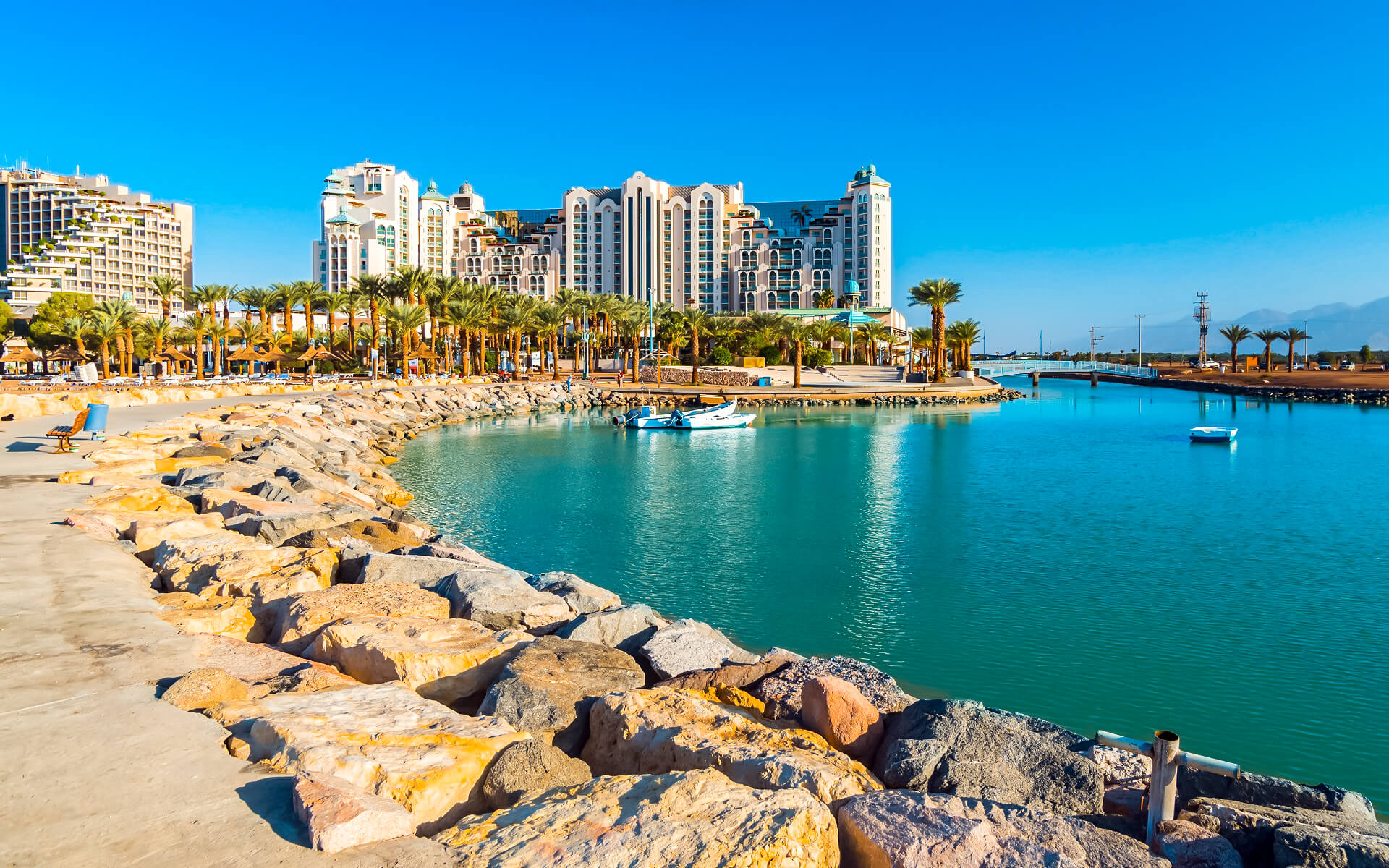Eilat is Israel’s southernmost city, a bustling port and famous tourist destination on the Red Sea’s northern point, on the Gulf of Aqaba.
Eilat, with a population of 48,946, is located in the Southern Negev Desert, near the southern end of the Arava, next to the Egyptian settlement of Taba to the south, the Jordanian port city of Aqaba to the east, and within sight of Saudi Arabia across the gulf to the south-east.
The harsh desert environment and low humidity of Eilat are mitigated by the city’s closeness to a warm sea. Temperatures often approach 40 °C (104 °F) in the summer and 21 °C (70 °F) in the winter, with water temperatures ranging from 20 to 26 °C (68 to 79 °F). Eilat has 360 sunny days per year on average.
The city’s beaches, coral reef, nightlife, and desert vistas make it a popular local and international tourist destination.


